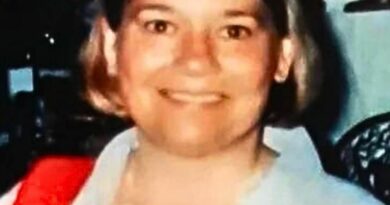Dr. Jeff Bradstreet Mysterious Suicide Death in Chimney Rock North Carolina
On June 19, 2015, Dr. Jeff Bradstreet’s life ended under circumstances that continue to provoke debate and speculation. A physician by training and an ardent advocate for alternative autism therapies, Bradstreet had built a career on controversial treatments and outspoken criticism of vaccine safety. His body was discovered floating in the Rocky Broad River near Chimney Rock, North Carolina, just days after agents from the U.S. Food and Drug Administration executed a raid on his Georgia clinic. What followed was an official ruling of suicide, yet unanswered questions and fervent doubts have fueled calls for an independent inquiry into the final chapter of his life.
Early Life and Medical Training
Jeff Bradstreet was born July 6, 1954. He completed a Bachelor of Science in 1976 and earned his Doctor of Medicine in 1984 from the University of South Florida. He went on to postgraduate training in aerospace medicine at Wilford Hall Medical Center, reflecting an early interest in specialized fields. In the late 1980s and early 1990s, Bradstreet established a general practice in Florida and Georgia, gaining a reputation as a caring and personable family physician. His faith journey led him to integrate Christian ministry into his approach to healing, a theme that would become central to his later work.
Shift Toward Autism and Alternative Therapies
By the early 2000s, Bradstreet’s focus had shifted decisively toward autism spectrum disorder (ASD). Motivated partly by his own son’s ASD diagnosis, he became convinced that environmental toxins and immune dysregulation underpinned the condition. He championed a suite of biomedical interventions—chelation therapy to remove heavy metals, hyperbaric oxygen treatments to improve oxygen delivery, intravenous immunoglobulin to modulate immune responses, and the experimental protein GcMAF to activate macrophages. Many of these approaches lay outside mainstream medical endorsement, yet Bradstreet maintained that they yielded dramatic improvements in communication, behavior, and overall health in children on the spectrum.
Founding the International Child Development Resource Center
In Melbourne, Florida, Bradstreet founded the International Child Development Resource Center, positioning it as a hub for biomedical autism therapies. He also launched the Good News Doctor Foundation, a nonprofit aimed at integrating spiritual care with medical treatment. His dual role as clinician and faith leader drew families seeking both physical and spiritual support, and his clinics in Buford, Georgia, and Arizona treated hundreds of children. Bradstreet published his findings in journals and at conferences, but his work often appeared in outlets not indexed by major medical databases, drawing criticism for a lack of rigorous peer review.
Scrutiny by Regulatory Authorities
By 2015, Bradstreet’s use of GcMAF had drawn the ire of the FDA. GcMAF, an experimental protein derived from human blood products, was neither approved nor manufactured under standardized conditions. In mid‐June 2015, federal agents, accompanied by state narcotics officers, executed a search warrant at his Buford, Georgia clinic. They seized patient records, laboratory notebooks, vials of GcMAF, and computer equipment. The raid was part of a broader investigation into his importation and administration of unlicensed biologics to treat autism, a probe that placed immense pressure on Bradstreet in the days leading up to his death.
Personal and Professional Pressures
In the days before June 19, colleagues and family reported that Bradstreet felt besieged. The loss of clinical materials, uncertainty over legal exposure, and public vilification had taken an emotional toll. Despite outward assurances of trust in his work, Bradstreet privately confided doubts and fears to close friends. His wife and children remained in Georgia, yet he traveled alone to western North Carolina for what he described as a short retreat to recharge. He sent encouraging messages to staff, urging them to continue serving families, even as he faced mounting regulatory challenges.
The Night of June 19, 2015
On the evening of June 19, Bradstreet drove to the Chimney Rock area, a place he and his family visited for its scenic trails and river views. He parked near the overlook just after dusk, telling no one his precise plans. Witnesses later reported seeing a lone figure on the riverbank. A single gunshot echoed into the night, though without definitive confirmation. Bradstreet’s vehicle was found left idling, doors unlocked, keys in the ignition. His personal effects, including a backpack and a small journal, lay scattered near the water’s edge.
Discovery of the Body
Early the next morning, a local fisherman discovered Bradstreet’s body floating in a deep pool of the Rocky Broad River. Rescue crews were summoned, and law enforcement cordoned off the scene. The riverbed was shallow near shore, allowing divers to recover a handgun lodged beneath rocks. No suicide note was found. Initial investigators noted that Bradstreet’s clothing showed no signs of a struggle, and there was no immediate indication of foul play beyond the gunshot.
Official Investigation and Autopsy
The Rutherford County Sheriff’s Office led the investigation, labelling the death an apparent suicide. An autopsy performed within days confirmed a single gunshot wound to the chest as the cause of death. The medical examiner found no signs of defensive wounds or drug impairment. Toxicology screens were inconclusive for intoxicating substances beyond therapeutic levels of medications Bradstreet had been prescribed. The case was formally closed, with authorities citing both physical evidence and Bradstreet’s own personal struggles as justification.
Family Response and Independent Inquiry
Bradstreet’s family refused to accept the official suicide ruling without further examination. Within weeks, they launched a crowdfunding campaign to hire independent forensic experts, ballistic analysts, and homicide investigators. They sought to reconstruct the timeline, re‐examine ballistic trajectories, and test river sediment samples for trace evidence. The family’s legal representative filed additional requests for records from the FDA and local law enforcement, hoping to uncover procedural errors or overlooked clues.
Conspiracy Theories and Public Debate
In the wake of his death, a chorus of conspiracy theories emerged. Some alleged government cover‐ups, suggesting Bradstreet’s research threatened entrenched pharmaceutical interests. Others speculated that the weapon’s position beneath the waterline was inconsistent with a suicide. Online forums buzzed with amateur sleuths dissecting every photograph and report. At the same time, mainstream medical voices decried Bradstreet’s legacy of unproven autism treatments, arguing that conspiracy theories only served to distract from evidence‐based care.
Impact on the Autism Community
Bradstreet’s death sent shockwaves through families who believed in his methods. Some patients reported regression in clinical gains after losing access to his clinics. Advocacy groups for biomedical autism therapies held memorial events, while skeptics highlighted the FDA raid as vindication of concerns over safety and ethics. The case underscored deep divisions within the autism community—between proponents of alternative, parent‐driven interventions and those advocating standardized, research‐validated therapies.
Professional Ramifications and Legacy
In academic circles, Bradstreet’s work has largely been relegated to the fringe. Journals that once published his findings have tightened review standards, and major autism conferences no longer include his name on speaker rosters. Yet his emphasis on immune and metabolic factors in autism sparked follow‐up research into biomarkers and neuroinflammation. While few endorse his specific protocols today, elements of his hypothesis have influenced cautious trials of immunomodulatory and metabolic therapies in autism research.
Lessons and Reflections
Bradstreet’s life and death serve as a complex case study in medical innovation, regulatory oversight, and personal conviction. His story illustrates both the promise and perils of pioneering treatments outside established frameworks. It raises enduring questions about how to balance patient autonomy with public safety, how to regulate emerging biologics, and how to support clinicians under the glare of controversy.
Conclusion
The death of Dr. Jeff Bradstreet on June 19, 2015, remains a subject of intense scrutiny and debate. Officially deemed a suicide, the circumstances of his final hours continue to evoke doubt and inspire calls for renewed investigation. Beyond the controversy, his life’s work catalyzed discussions about the boundaries of medical practice, the role of faith in healing, and the complexities of caring for children with autism. Whether viewed as a maverick healer or misguided crusader, Bradstreet’s legacy endures in the hopes, fears, and questions he left behind.
Discover more from City Towner
Subscribe to get the latest posts sent to your email.




